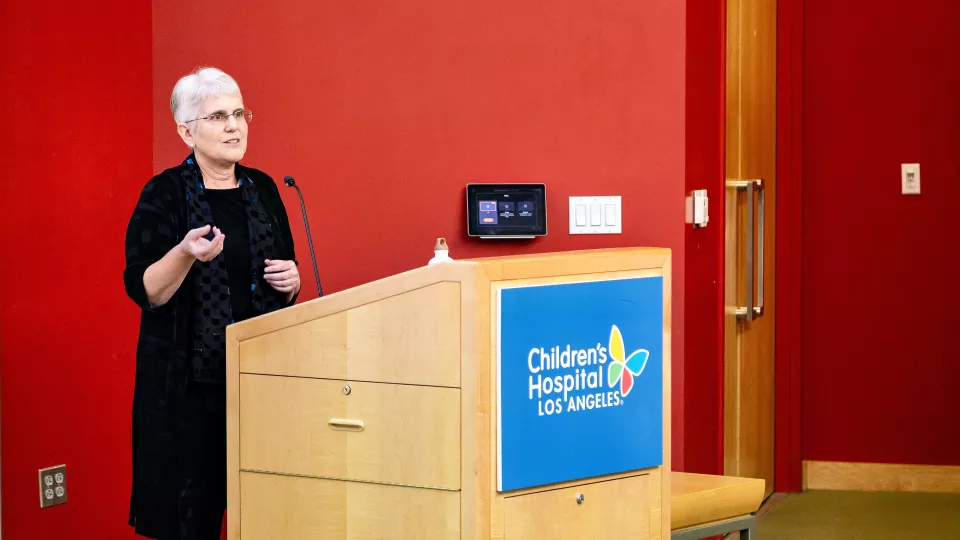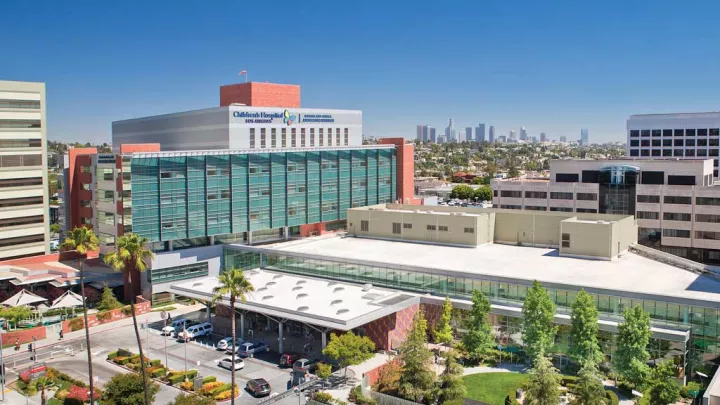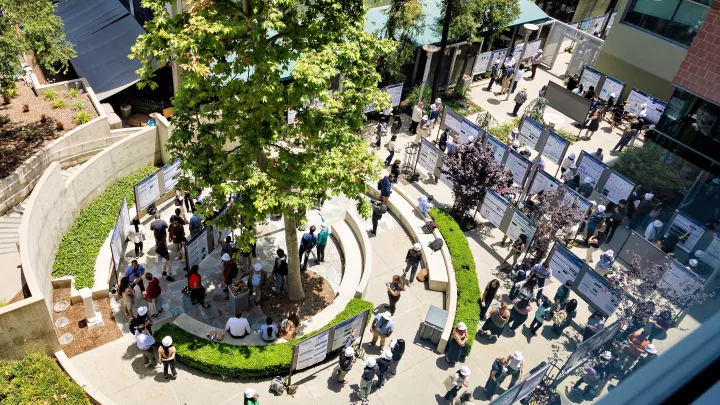
Jacqueline Szmuszkovicz, MD, delivers talk on pediatric inflammatory conditions, MIS-C and Kawasaki disease.
How an Evolving Understanding of MIS-C could Help to Unlock the Mysteries of Kawaski Disease
It was a rare blessing of the early pandemic: Children seemed to be mostly spared from the effects of COVID-19. But in March and April 2020, doctors in Italy, followed by clinicians around the world, began observing cases of young children with a serious new inflammatory syndrome. In May, the Centers for Disease Control and Prevention, the European Centre for Disease Prevention and Control and the World Health Organization issued alerts.
The new syndrome, dubbed multisystem inflammatory syndrome in children (MIS-C), surfaced about a month after the peak of community COVID-19 infection. “In some cases, it looked like toxic shock syndrome, sometimes like sepsis or macrophage-activated syndrome,” recounted Jacqueline Szmuszkovicz, MD, Medical Director of the Kawasaki Disease and Pulmonary Hypertension programs at the Heart Institute of Children’s Hospital Los Angeles. “Some parents did not realize that their children had acute COVID, although other family members had been ill. Many patients had negative PCR tests and positive immunoglobulin G, which suggested to us that MIS-C represents a post infectious immune-related complication rather than an acute infection.”
A new syndrome emerges
So far, nearly 10,000 U.S. children and adolescents have been diagnosed with MIS-C, which is characterized by overwhelming inflammation throughout the body. Children have fever and can have symptoms involving the gastrointestinal, cardiac, hematologic and mucocutaneous systems. About half of patients have shock and are sick enough to go to the ICU. Up to 80% of patients experience cardiac abnormalities, but most patients respond to therapy and feel better quickly in the hospital.
In November 2023, Dayna Zimmerman, MD, a pediatric medicine fellow in CHLA’s Heart Institute, published a cardiovascular study in Pediatrics, that included 69 children with MIS-C who had cardiac follow-up studies six months after discharge. Of those 69 patients, 54% showed evidence of heart injury during their acute illness. Interestingly, cardiac abnormalities were found in both the group with evidence of acute heart issues in the hospital and the remaining patients without symptoms. “Based on what we have seen so far, we recommend that all patients treated for MIS-C warrant outpatient follow-up,” says Dr. Szmuszkovicz. “The clinical significance of these findings and whether they will persist remains unclear. Longer-term studies are needed.”
As of March 2024, 224 MIS-C patients have been treated at CHLA—about 2% of all MIS-C patients in the country. “The CDC data shows that a majority are Hispanic/Latino or non-Hispanic Black—groups that we know have been more disproportionately affected by COVID-19 overall,” says Dr. Szmuszkovicz. As of April 2024, the CDC has logged 9,684 MIS-C patients and 79 deaths. Sixty percent of these MIS-C patients were male, and half were children 5-13 years old, with a median patient age of 9 years.
Echoes of another rare disease
Curiously, the symptoms of children with MIS-C resembled those of another rare and serious inflammatory condition—Kawasaki disease—which affects about 25 out of 100,000 children under five years old in the U.S. Its cause is unknown, but symptoms include acute vasculitis, fever and rash. Kawasaki disease can cause coronary artery aneurysms in 25% of children, but prompt immunomodulation treatment can reduce their incidence to affect only about 4% of patients. “It is the most common cause of pediatric-acquired heart disease in the developed world,” says Dr. Szmuszkovicz.
A small subset of patients—about 5% pre-pandemic—develop a more serious form of illness, called Kawasaki shock syndrome. “It is often mistaken for toxic shock syndrome or sepsis,” says Dr. Szmuszkovicz. “It tends to be more resistant to regular treatment.”
Kawasaki shock syndrome patients and the sickest MIS-C patients are hard to distinguish from each other. “It is interesting to think about how understanding MIS-C is hopefully going to help unlock the mysteries of the mechanism of Kawasaki disease,” says Dr. Szmuszkovicz. “We have seen a recent decline in the incidence of MIS-C. Its age distribution has shifted to younger children. Fortunately, overall, it has become milder in its effects.”
CHLA is participating in other ongoing studies examining potential risk factors for these syndromes:
- The International Kawasaki Disease Registry, which collects data on variants and risk factors involved in Kawasaki disease and MIS-C.
- Long-terM oUtcomes after the Multisystem Inflammatory Syndrome In Children (MUSIC) study. This 32-site study sponsored by the National Institutes of Health, enrolled 1200 children with MIS-C to characterize long term outcomes, develop clinical risk stratification models and to correlate phenotype data with basic and translational research studies.
- The multicenter NIH-sponsored Researching COVID to Enhance Recovery (RECOVER) study. The CHLA RECOVER site, led by Sindhu Mohandas, MD, David Warburton, OBE, DsC, MD, and John Wood, MD, PhD, is investigating Post Acute Sequelae of COVID-19 (including pediatric long COVID and MIS-C) by tracking the long-term outcomes of thousands of children with and without COVID-19.
- The PreVAIL study will use machine learning to help optimize the diagnosis of Kawasaki disease and MIS-C, to predict patient response to therapy and long-term outcomes.


